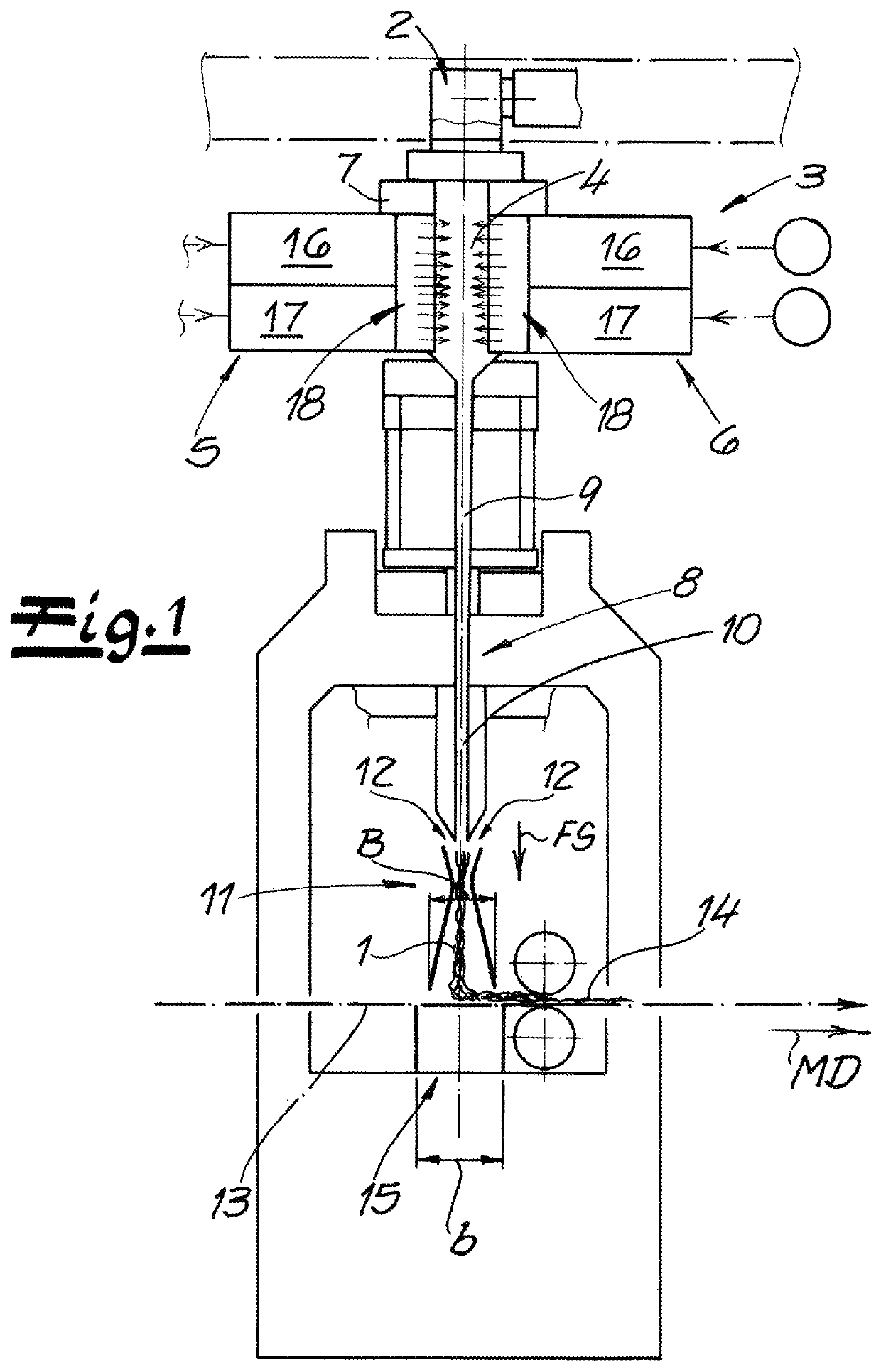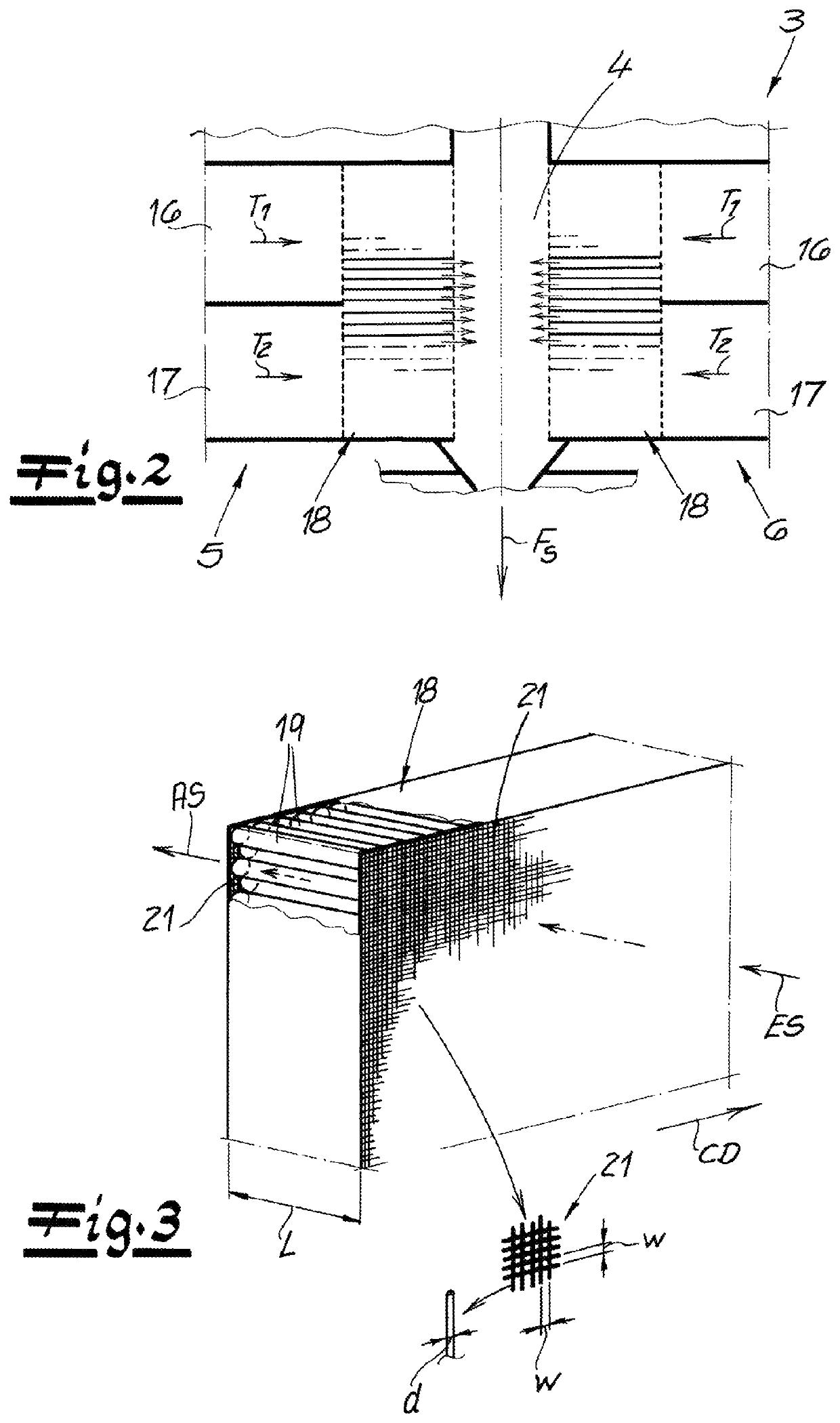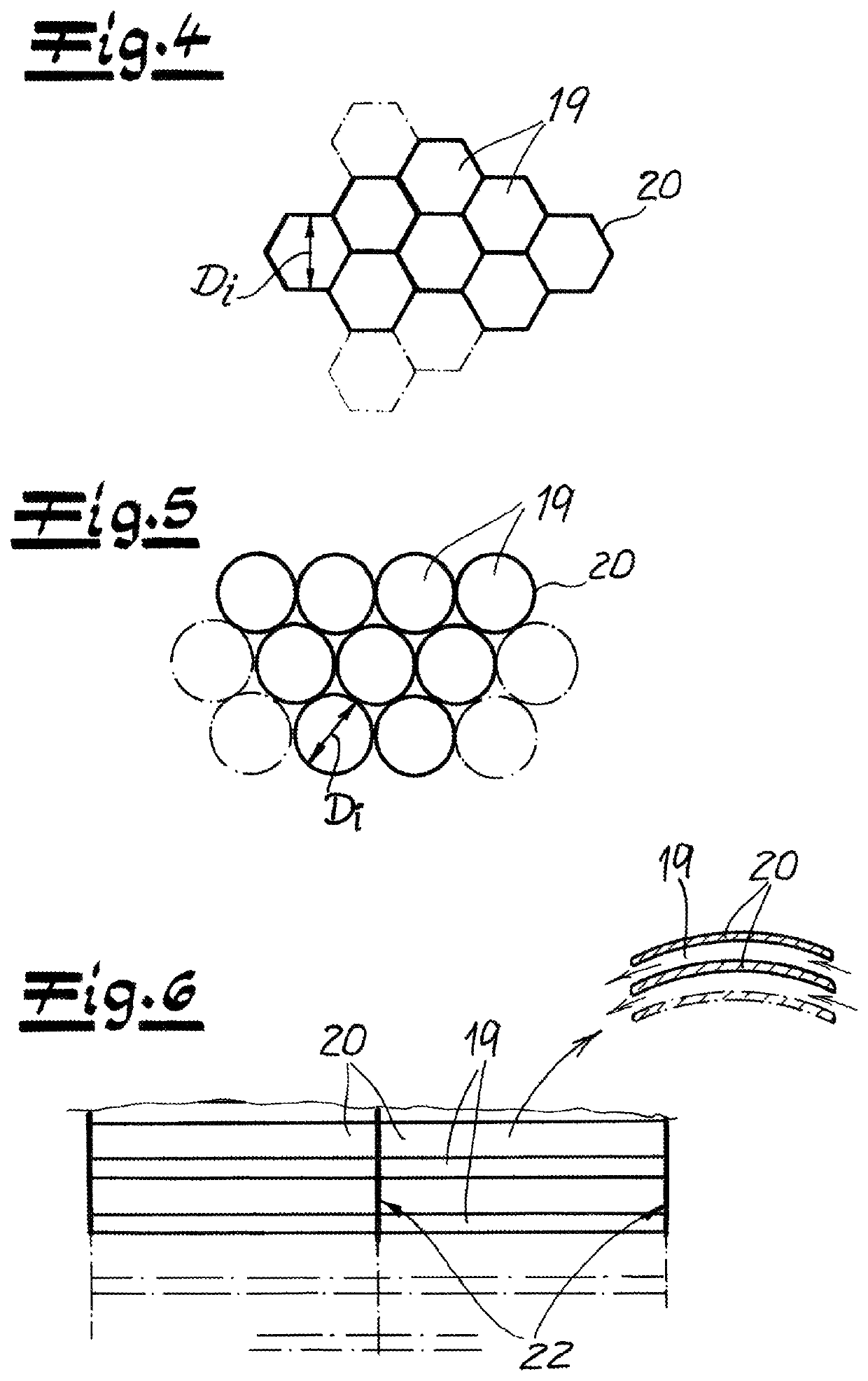Apparatus for making spunbonded nonwoven from continuous filaments
a technology of continuous filaments and filaments, which is applied in the field of apparatus for making spunbonded nonwovens from continuous filaments, can solve the problems of inhomogeneity of spunbonded nonwovens, defect of spunbonded nonwovens, and inability to meet the requirements of continuous filaments, so as to achieve simple and inexpensive measures, prevent unwanted imperfections in the nonwoven web, and influence the effect of filaments
- Summary
- Abstract
- Description
- Claims
- Application Information
AI Technical Summary
Benefits of technology
Problems solved by technology
Method used
Image
Examples
Embodiment Construction
[0040]As seen in FIG. 1 an apparatus according to the invention for manufacturing spunbonded nonwovens from continuous filaments 1, particularly from continuous thermoplastic filaments 1 has a spinneret 2 for spinning the continuous filaments 1. These spun continuous filaments 1 are introduced in a vertical and downward filament-travel direction FS into a cooler 3 with a cooling chamber 4 flanked on opposite sides by air-supply manifolds 5 and 6. The cooling chamber 4 and the air-supply manifolds 5 and 6 are spaced transverse to a machine direction MD perpendicular to the direction FS and thus in the CD direction of the apparatus. Cooling air is introduced from the oppositely situated air-supply manifolds 5 and 6 into the cooling chamber 4. Preferably and here, a monomer extractor 7 is provided between the spinneret 2 and the cooler 3. With this monomer extractor 7, objectionable gases produced by the spinning process can be removed from the apparatus. These gases can be monomers, o...
PUM
| Property | Measurement | Unit |
|---|---|---|
| thickness | aaaaa | aaaaa |
| thickness | aaaaa | aaaaa |
| length | aaaaa | aaaaa |
Abstract
Description
Claims
Application Information
 Login to View More
Login to View More - R&D
- Intellectual Property
- Life Sciences
- Materials
- Tech Scout
- Unparalleled Data Quality
- Higher Quality Content
- 60% Fewer Hallucinations
Browse by: Latest US Patents, China's latest patents, Technical Efficacy Thesaurus, Application Domain, Technology Topic, Popular Technical Reports.
© 2025 PatSnap. All rights reserved.Legal|Privacy policy|Modern Slavery Act Transparency Statement|Sitemap|About US| Contact US: help@patsnap.com



